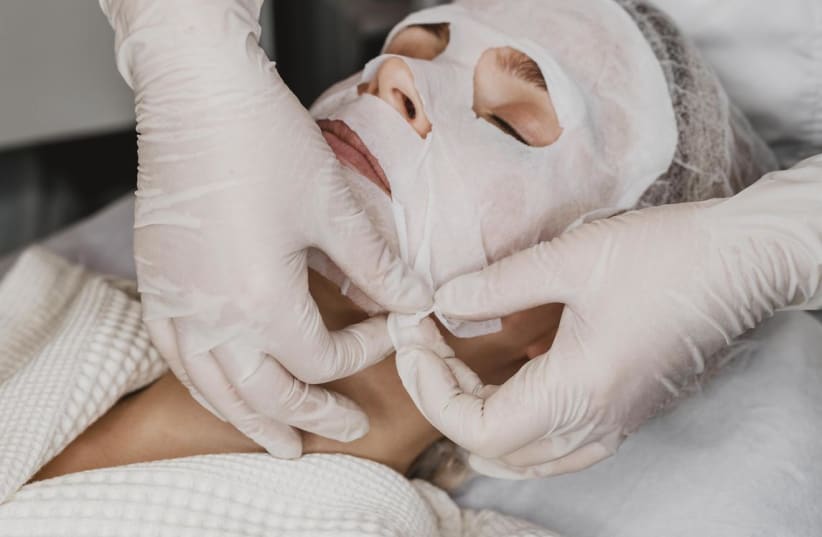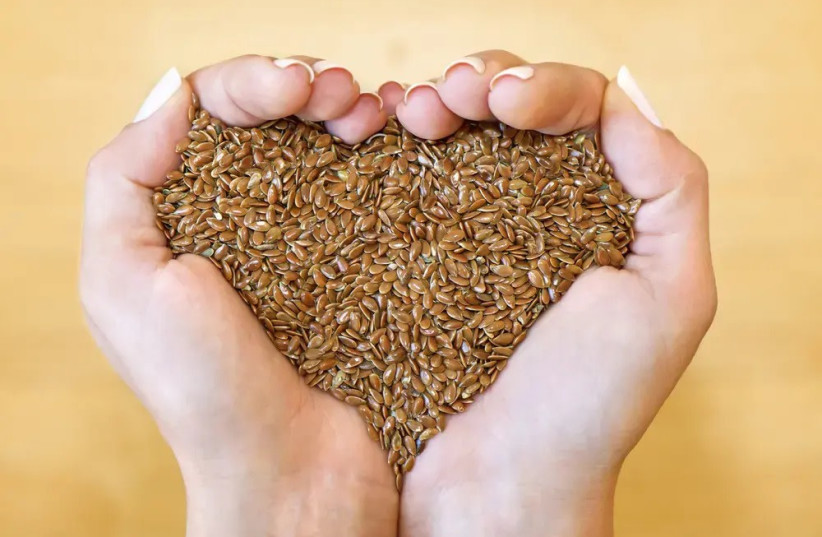If you scroll through TikTok and are interested in skincare, there's no doubt you've come across the viral silk seed mask promising Botox-like results. The trend, boosted by TikTok influencer Victoria Benitez, has received over 7 million views. In the video, she is seen dipping her fingers into a bowl filled with a slightly slimy mixture resembling slime, and declaring: "Do you see this? This is Botox. This is Botox that you make at home."
The attraction of users to the mask is probably due to the fact that it is made with two ingredients - water and silk seeds. And of course, its cheap price. But does it actually work at all? And what do dermatologists say about this new trend?
@victoria__benitez God i love this mask #flaxseedgel #flaxseed #health #natural #skincare ♬ original sound - victoria__benitez
What is the DIY Botox mask?
Silk seeds are small brown seeds packed with fibers, omega-3 fatty acids, vitamins, and other minerals. They are usually used to improve digestion and relieve constipation, but studies also show that consuming them can help lower cholesterol levels. Now, as mentioned, the nutrient-rich seeds are praised even when it comes to skin and hair health.
To make the mask, mix half a cup of flax seeds with two cups of water until a gel-like mixture is formed. There is debate as to whether it is better to use cold or warm water, or to bring the seeds and water to a boil together.
Does it work?
Eliza Luckau, a writer for The British Sun, decided to test the mask herself. She took half a cup of flax seeds and a cup of warm water, mixed them for 30 seconds, and then placed the mixture in the refrigerator for 24 hours.
After applying the mask, which she found to be too watery, she reported that her skin felt dry to the point where she needed to apply moisturizer.
In her second attempt, the mask was thicker and more gel-like. "I removed the cheese cloth and separated the gel from the seeds. The gel left in the bowl had a light gray-brown hue - to be honest, it looked a bit like snot," she wrote. According to her, "the mask worked quickly, and after 15 minutes, my face was mostly motionless." She added that "after half an hour, my face felt very dry and tense. It was slightly itchy every time I tried to move it." She removed the mask after about an hour.
So what does she say?
"My skin felt quite soft, and luckily, it looked and felt much less dry and itchy than after the first attempt. I did my regular skincare routine, and I must admit my skin looks quite radiant. In the following days, I noticed that the blemishes under my chin and on my neck were smaller and less red. But I can't say for sure if it was because of the mask or some placebo effect."
She concluded, "In terms of masks, it's not too complicated to prepare and filter as long as you have cheese cloth or a good filter. It seems that it can be stored for a few good days in the refrigerator. I'm not convinced that this is nature's answer to Botox, and I think I will need to consistently apply the mask to see visible changes in my skin. Will I make the mask again? I'm not sure."
What do the experts say?
Dr. Lahavit AkermanDr. Lahavit Akerman / Yachat"Every time I see another silly (and sometimes even dangerous) trend on TikTok, I am surprised again at how a trend can become ingrained in the consciousness despite being baseless and disconnected from any fact," says Dr. Lahavit Akerman, a specialist dermatologist.
"The latest trend in question is flaxseed. Simply typing those words will yield a variety of videos in which celebrities for a second smear themselves with a sticky slime-like paste while muttering promises of skin improvement, and they even recently started claiming a Botox-like effect. Why? Just because. Is it backed by scientific research? Not at all.
So what does science know at this stage? Botox (botulinum toxin) is defined as a drug and has been used for cosmetic and other medical treatments for over 30 years with extensive research on its effects. In short, the substance is injected into muscles and causes a reduction in their contraction. Why does this help against certain wrinkles? (mainly expression wrinkles in the upper third of the face) because these wrinkles primarily occur due to muscle contractions, so injecting Botox will temporarily paralyze the muscle and significantly improve the wrinkle. It is no wonder that this injection is the most common aesthetic treatment in the world. With the correct treatment, it is an excellent, safe, and effective procedure. What is the connection between flaxseeds and wrinkles - and if we clarify what is the connection between flaxseeds and their effect on the muscle that causes wrinkles (similar to Botox)? That's right, absolutely nothing!! Flaxseeds are rich in omega-3 fatty acids, fiber, vitamin E (a powerful antioxidant), and various vitamins and minerals that can indeed have an impact on skin flexibility, skin radiance, and nourishment, but they have no effect on the muscle, and therefore, no Botox-like effect. Moreover, while the effect of a Botox injection lasts for several months, here the effect wears off after a few hours."
"Another thing worth noting, also a natural thing, as good as it may be, when it is produced in a partisan manner at home without any knowledge and skill, it will not be beneficial at best, and in the worst case, it can cause skin irritation. I highly recommend to those who want to enjoy the beneficial effect of flaxseed on the skin to purchase a product that contains the substance from authorized places and a product that has been approved for application on the skin by the Ministry of Health. And Botox? Currently, it will continue to shine as the most popular treatment and it does not seem to have a successor in the near future."

